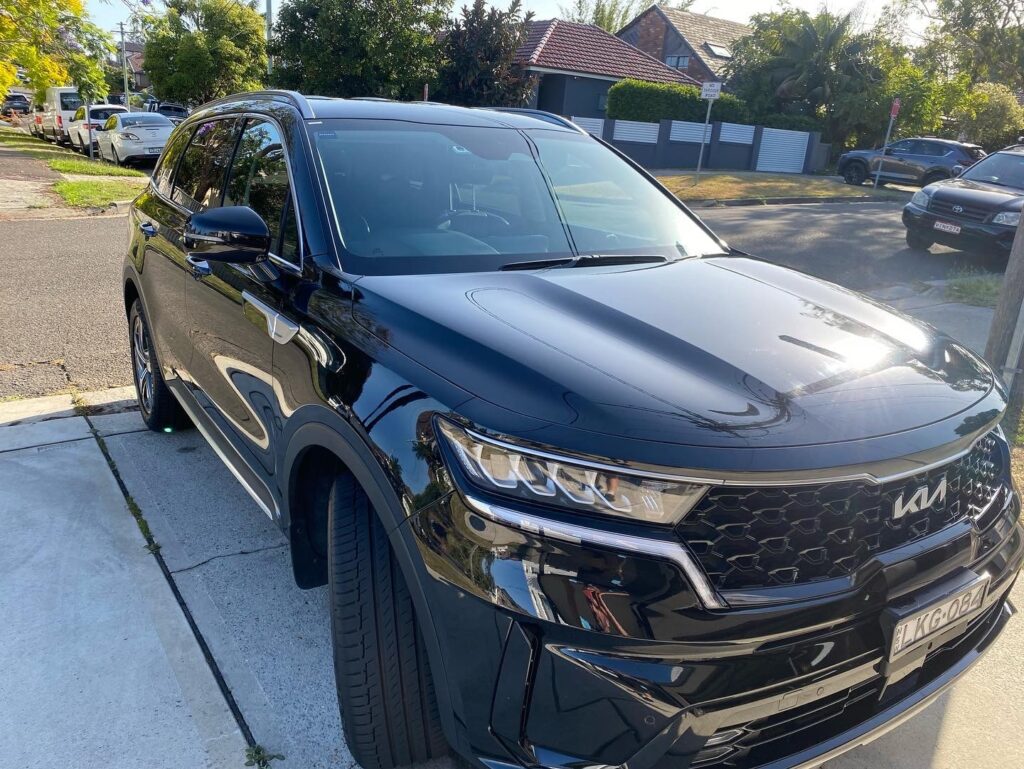When it comes to keeping your car looking its best, paint protection is essential. Over time, your vehicle’s paintwork is subjected to harsh elements, including UV rays, road debris, and environmental pollutants. This is where coatings like ceramic and graphene come into play. Both are designed to offer superior protection for your car, but which one is better? In this article, we’ll explore the differences between graphene and ceramic coating, their benefits, and how to choose the right detailer for your car. Whether you’re a car enthusiast or simply want to keep your vehicle in top shape, understanding these coatings will help you make an informed decision.
Read Also : The Impact of Ceramic Coating on Car Resale Value
What is Ceramic Coating?
Ceramic coating has become a popular choice for car owners looking to protect their vehicle’s paint. This liquid polymer is applied to the car’s exterior, forming a chemical bond with the paint. Once cured, it creates a protective layer that shields the paint from contaminants and UV damage. One of the main advantages of ceramic coatings is their hydrophobic properties, which cause water to bead off the surface, taking dirt and grime with it. This makes your car easier to clean and keeps it looking shiny for longer.
In addition to water repellency, ceramic coatings offer excellent resistance to minor scratches, chemical stains, and oxidation. They provide a glossy finish that enhances the car’s appearance, making it look as if it has just rolled off the showroom floor. However, ceramic coatings require professional application for the best results, as improper application can lead to streaking or uneven coverage

What is Graphene Coating?
Graphene coatings are the latest innovation in the car detailing industry. Graphene, a single layer of carbon atoms arranged in a hexagonal lattice, is known for its incredible strength and conductivity. When used as a coating, graphene offers several advantages over traditional ceramic coatings.
One of the key benefits of graphene coatings is their superior durability. Graphene is more resistant to heat and chemicals, which means it can withstand harsher conditions without degrading. Additionally, graphene coatings are highly hydrophobic, like ceramic coatings, but they also offer better resistance to water spots, which is a common issue with ceramic coatings.
Another significant advantage of graphene is its ability to reduce heat on the car’s surface. This is particularly beneficial in hot climates, as it can prevent water spots and reduce the risk of etching caused by bird droppings or tree sap. Overall, graphene coatings provide a more durable and heat-resistant protective layer, making them an excellent choice for car owners seeking the best possible protection.

Graphene Coating vs. Ceramic Coating: Key Differences
While both graphene and ceramic coatings offer excellent protection, there are some key differences to consider:
-
- Durability: Graphene coatings tend to be more durable than ceramic coatings, thanks to their higher resistance to chemicals, heat, and UV rays. This makes graphene coatings less prone to wear and tear over time, providing longer-lasting protection.
-
- Water Repellency and Self-Cleaning: Both coatings are hydrophobic, but graphene has the edge when it comes to resisting water spots. The self-cleaning properties of graphene coatings are also slightly better, meaning your car will stay cleaner for longer between washes.
-
- Scratch Resistance and Heat Tolerance: Graphene coatings offer superior scratch resistance due to their strong molecular structure. They are also better at dissipating heat, which can reduce the risk of surface damage in extreme temperatures.
-
- Corrosion Resistance: One of the most important factors in choosing a coating, especially for vehicles exposed to harsh environments, is corrosion resistance. Ceramic coatings provide a decent level of corrosion protection by creating a barrier that shields the paint from contaminants and moisture. However, graphene coatings take corrosion resistance to the next level. The unique structure of graphene allows it to create a more impervious barrier against corrosive elements, such as salt and chemicals. This makes graphene coatings particularly advantageous for cars in coastal areas or regions with harsh winters, where the roads are often treated with salt.
These differences make graphene coatings a more advanced option for car protection, though ceramic coatings are still an excellent choice for those looking for a high-quality, affordable solution.

Which Coating Offers Better Protection?
When it comes to protection, both coatings have their strengths. Graphene coatings generally offer better protection against environmental factors such as heat, water spots, and chemical exposure. They are particularly well-suited to harsh environments where your car is exposed to extreme weather conditions or heavy contaminants.
On the other hand, ceramic coatings still provide outstanding protection at a lower cost. They are ideal for car owners who want a reliable, long-lasting coating without breaking the bank. Ceramic coatings are easier to apply and maintain, making them a popular choice for those who prefer a more straightforward approach to car care.
Ultimately, the best coating for your vehicle depends on your specific needs, budget, and the environmental conditions in your area. For the most comprehensive protection, especially in demanding climates, graphene may be the better option.
Choosing the Right Detailer for Your Car
Applying a coating is not a job to take lightly—it requires skill and precision to achieve the best results. This is why selecting the right detailer for your car is crucial. A professional detailer with experience in both graphene and ceramic coatings will ensure that the application is flawless and that your car receives the maximum benefit from the coating.
When choosing a detailer, consider their experience, reviews, and the products they use. It’s important to ask questions about their application process, the type of coatings they recommend, and how they prepare the car’s surface before applying the coating. A good detailer will be transparent and provide detailed answers, giving you confidence in their services.

Maintaining Your Coating: Best Practices
Once your car has been coated, maintenance is key to preserving its protection and shine. Here are some tips to keep your coating in top condition:
-
- Regular Washing: Wash your car regularly using a pH-neutral car shampoo to avoid stripping the coating. Avoid using harsh chemicals or abrasive sponges that could damage the coating.
-
- Drying: Always dry your car thoroughly after washing to prevent water spots. Use a microfiber towel to gently blot the surface dry.
-
- Touch-ups: Over time, your coating may develop minor imperfections. It’s a good idea to schedule periodic touch-ups with your detailer to maintain the coating’s effectiveness.
By following these best practices, you can extend the life of your coating and keep your car looking its best for years to come.
Conclusion
Choosing between graphene and ceramic coatings comes down to your specific needs and the level of protection you’re looking for. Graphene coatings offer cutting-edge technology with superior durability, heat resistance, and corrosion protection, making them ideal for those who want the best possible protection for their vehicle. Ceramic coatings, while slightly less advanced, still provide excellent protection and are a more affordable option for everyday use. Whichever you choose, ensure that you select a skilled detailer and maintain your coating properly to enjoy the full benefits.
Ready to give your car the ultimate protection? At Vince’s Car Detailing, we specialise in ceramic and graphene coatings that shield your vehicle from the harshest elements, including corrosion and UV damage. Our expert team ensures your car maintains its showroom shine for years to come. Don’t wait—visit Vince’s Car Detailing today and book your car detailing service to experience unparalleled protection and lasting beauty.
